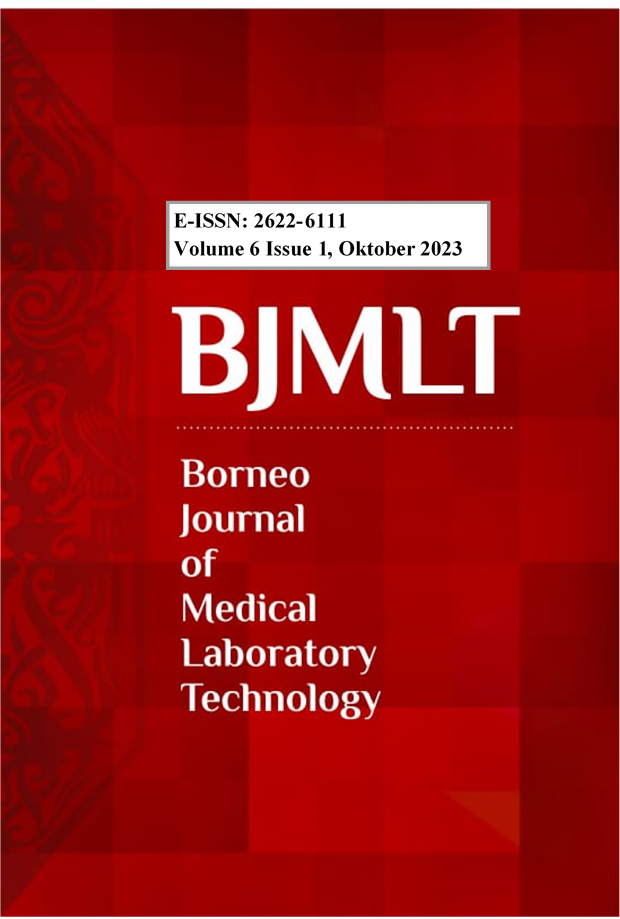Potensi Ikan Seluang (Rasbora spp.) Dan Ikan Lais (Kryptopterus spp.) Dalam Meningkatkan Performa Tikus Wistar (Rattus Norvegicus) Malnutrisi The Potential of Seluang Fish (Rasbora spp.) and Lais Fish (Kryptopterus spp.) in Improving the Performance of Malnourished Wistar Rats (Rattus norvegicus)
Main Article Content
Abstract
Malnutrition caused by a lack of nutritional intake in children can have a negative impact on physical growth, cognitive function development and immune levels. Malnutrition conditions which are persistently allowed without special intensive and consistent treatment will result in stunting. The efforts that can be made to overcome the incidence of stunting are by fulfilling complex nutrition which can come from various sources, one of which is by consuming seluang fish and lais fish which have high calorie, protein and fat content since they have the potency to improve nutrition in children, especially children who suffer from stunting. The aim of this research was to see the potential of seluang and lais fish in improving performance in Wistar rats induced by malnutrition. This research type is a true experimental research with a pretest-posttest with control group design using 25 male white rats (Rattus norvegicus) Wistar strain aged 2-4 weeks which will be divided into 5 groups, namely K(+), K(-) , P1, P2, P3. The Wilcoxon test was also carried out to analyze the physical endurance of mice and it was found that there was a significant difference in the number of mice falls (p=0.000). The results showed that there was a significant increase physical endurance between before and after the treatment in malnutrition induced rats. The P3 group had the most effective dose in improving rat performance.
Downloads
Article Details

This work is licensed under a Creative Commons Attribution-ShareAlike 4.0 International License.
All rights reserved. This publication may be reproduced, stored in a retrieval system, or transmitted in any form or by any means, electronic, mechanical, photocopying, recording.
References
Badan Pusat Statistik Provinsi Kalimantan Tengah. (2022). Pengeluaran dan konsumsi penduduk Provinsi Kalimantan Tengah. Badan Pusat Statistik Provinsi Kalimantan Tengah. Palangka Raya.
Damongilala, L.J. (2021). Kandungan gizi pangan ikani. CV. Patra Media Grafindo.
Daracantika, A., Ainin., Besral. (2021). Systematic literature review: Pengaruh negatif stunting terhadap perkembangan kognitif anak. Jurnal Biostatistik, Kependudukan, dan Informatika Kesehatan (BIKFOKES). 1(2): 124-135.
Kementerian Kesehatan Republik Indonesia. (2022). Buku saku survei status gizi Indonesia (SSGI) tahun 2022. Badan Kebijakan Pembangunan Kesehatan.
Kementerian Kesehatan RI. (2019). Peraturan menteri kesehatan republik indonesia nomor 28 tahun 2019 tentang angka kecukupan gizi yang dianjurkan untuk masyarakat indonesia.
Lestari, R.M., Triawanti., Yunanto, A. (2016). Efek pemberian ikan saluang (rasbora spp.) terhadap kadar kalsium tulang tikus putih (rattus norvegicus) malnutrisi. Berkala Kedokteran. 12(1): 69-76..
Pratiwi, R., Sari, R., Ratnasari, F. (2021). Dampak status gizi pendek (Stunting) terhadap prestasi belajar : A Literature Review. Nursing Update Jurnal Ilmiah Ilmu Keperawatan. 12(2): 10-23.
Rahayu, A., Yulidasari, F., Putri, A. O., Anggraini, L. (2018). Study guide - stunting dan upaya pencegahannya. Banjarmasin : CV Mine.
